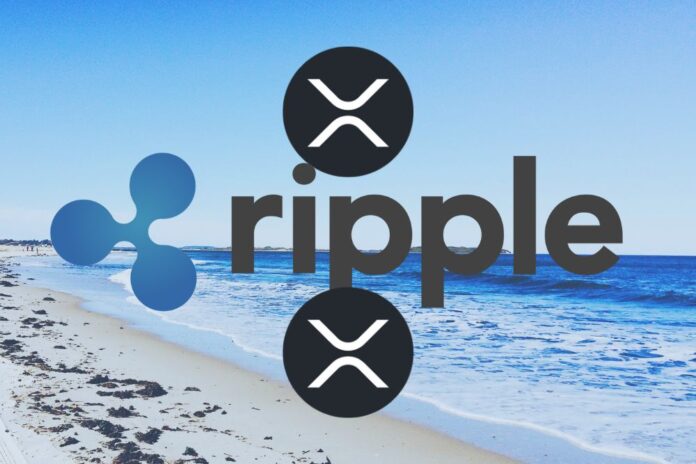Ripple has recently made waves in the digital finance realm by announcing the launch of a cutting-edge Central Bank Digital Currency (CBDC) platform in May 2023. This innovative platform empowers central banks, governments, and financial institutions to take charge of their digital currency issuance, distribution, and management.
Leveraging Ripple’s advanced technology and derived from their earlier Private Ledger project, this platform utilizes the robust capabilities of the XRP Ledger (XRPL) to forge a new chapter of customizable and efficient CBDCs.
Read Also: Over 15% of Countries in the World Are in Discussion to Use Ripple CBDC Platform
Eight Nations Building CBDCs on the XRP Ledger (XRPL)
According to a recent report, within three months of its emergence, 8 nations have already initiated the development of CBDCs on the XRP Ledger.
Among these pioneering nations are Russia, the Republic of Palau, Montenegro, Japan, the United Arab Emirates (UAE), Uruguay, New Zealand, and Hong Kong. This early solid adoption highlights the recognition of Ripple’s CBDC platform as a viable and compelling solution.
🚨💥BREAKING: #RIPPLE REVEALS OVER 8 COUNTRIES ARE BUILDING CBDC’S ON $XRP!
RUSSIA
REPUBLIC OF PALAU
MONTENEGRO
JAPAN
URUGUAY
HONG KONG
NEW ZELAND
UAE pic.twitter.com/2cLR4hW3Ty— CryptoGeek (@CryptoGeekNews) August 19, 2023
XRPL as the Preferred CBDC Platform
James Wallis, Ripple’s Vice President of Central Bank Engagements and CBDCs, revealed last month that the company is in discussions with over 30 countries in relation to adopting their XRPL-powered CBDC platform. Wallis disclosed that while Ripple has already publicly announced partnerships with five central banks, five others remain undisclosed.
Moreover, Ripple is actively engaging with an additional 20 countries to offer them the choice of their private or public XRP ledger as a foundation for developing CBDCs. This significant interest from approximately 15% of the world’s countries demonstrates the global appeal and potential of Ripple’s technology for CBDC creation.
XRP’s Crucial Role
When Ripple initially announced a private XRP Ledger for CBDCs back in 2021, the company highlighted the versatility of XRP as a “neutral bridge asset for frictionless value movement between CBDCs and other currencies.”
However, it’s important to note that the private ledger, although built upon XRPL, does not necessitate the utilization or interaction with XRP. This implies that Central Banks opting to build their CBDCs on Ripple’s platform can do so without interacting with the digital asset.
Through its groundbreaking CBDC platform, Ripple has emerged as a frontrunner in revolutionizing the global financial landscape. With an ever-expanding roster of nations embracing the XRP Ledger as their choice for CBDC construction, Ripple’s technology showcases remarkable potential in shaping the future of digital currencies.
We are on twitter, follow us to connect with us :- @TimesTabloid1
— TimesTabloid (@TimesTabloid1) July 15, 2023
Advantages of XRP Ledger for CBDCs
The decision of multiple countries to build CBDCs on the XRP Ledger highlights the numerous advantages offered by Ripple’s technology. Here are some key benefits:
- Speed and Efficiency: The XRP Ledger operates on a fast and efficient consensus algorithm, enabling swift transaction settlement. This allows for seamless and near-instantaneous transfer of funds, providing users with a streamlined and efficient CBDC experience.
- Scalability: With its high throughput capacity, the XRP Ledger can handle a large volume of transactions per second, making it suitable for countries with significant transactional demands. This scalability ensures that the CBDC platform can handle the needs of a nation’s financial ecosystem.
- Security and Reliability: Built on a robust and decentralized blockchain, the XRP Ledger offers enhanced security measures, protecting against potential threats and ensuring the integrity of CBDC transactions. This reliability instills confidence in central banks and users, fostering trust and stability within the digital economy.
- Interoperability: Ripple’s CBDC platform leverages the XRP Ledger’s ability to facilitate interoperability between different currencies and CBDCs. This allows for seamless cross-border transactions and enhances international trade by eliminating barriers and reducing friction in value movement.
- Customizability: Ripple provides a flexible platform that can be tailored to meet the specific needs and requirements of individual countries. The XRP Ledger allows central banks to customize their CBDCs’ features, such as transaction fees, privacy settings, and compliance protocols, ensuring a personalized and efficient CBDC ecosystem.
By choosing the XRP Ledger, countries can capitalize on these advantages to create robust, secure, and efficient CBDCs that benefit their economies and empower their citizens.
Follow us on Twitter, Facebook, Telegram, and Google News


